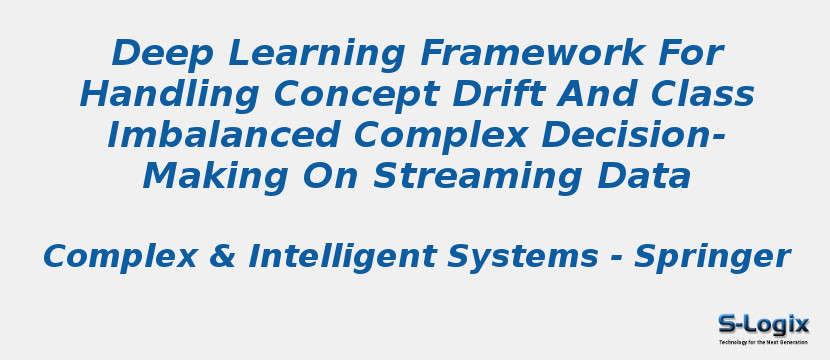Research Area: Machine Learning
In present times, data science become popular to support and improve decision-making process. Due to the accessibility of a wide application perspective of data streaming, class imbalance and concept drifting become crucial learning problems. The advent of deep learning (DL) models finds useful for the classification of concept drift in data streaming applications. This paper presents an effective class imbalance with concept drift detection (CIDD) using Adadelta optimizer-based deep neural networks (ADODNN), named CIDD-ADODNN model for the classification of highly imbalanced streaming data. The presented model involves four processes namely preprocessing, class imbalance handling, concept drift detection, and classification. The proposed model uses adaptive synthetic (ADASYN) technique for handling class imbalance data, which utilizes a weighted distribution for diverse minority class examples based on the level of difficulty in learning. Next, a drift detection technique called adaptive sliding window (ADWIN) is employed to detect the existence of the concept drift. Besides, ADODNN model is utilized for the classification processes. For increasing the classifier performance of the DNN model, ADO-based hyperparameter tuning process takes place to determine the optimal parameters of the DNN model. The performance of the presented model is evaluated using three streaming datasets namely intrusion detection (NSL KDDCup) dataset, Spam dataset, and Chess dataset. A detailed comparative results analysis takes place and the simulation results verified the superior performance of the presented model by obtaining a maximum accuracy of 0.9592, 0.9320, and 0.7646 on the applied KDDCup, Spam, and Chess dataset, respectively.
Keywords:
Author(s) Name: S. Priya & R. Annie Uthra
Journal name: Complex & Intelligent Systems
Conferrence name:
Publisher name: Springer
DOI: 10.1007/s40747-021-00456-0
Volume Information: Volume 2021
